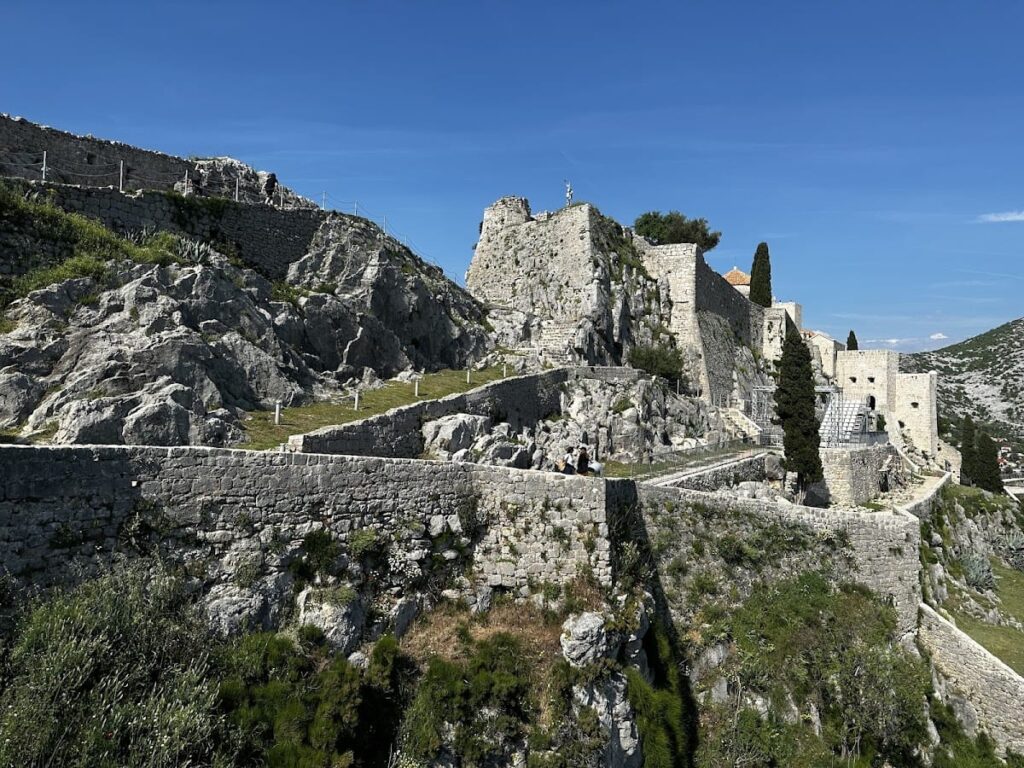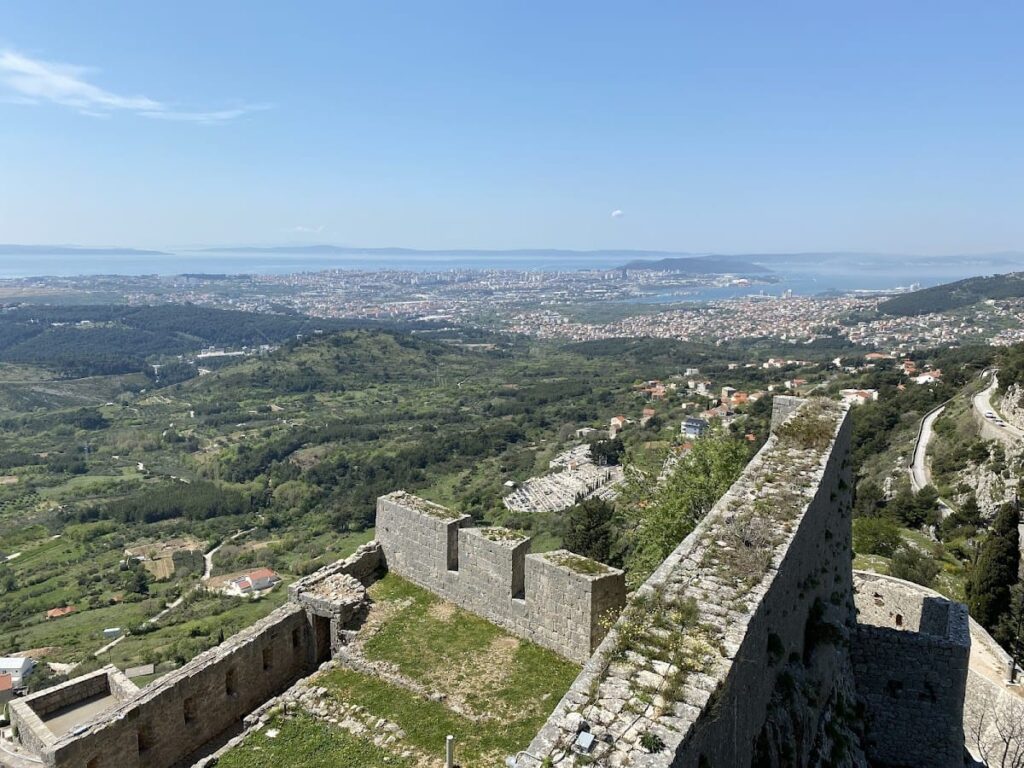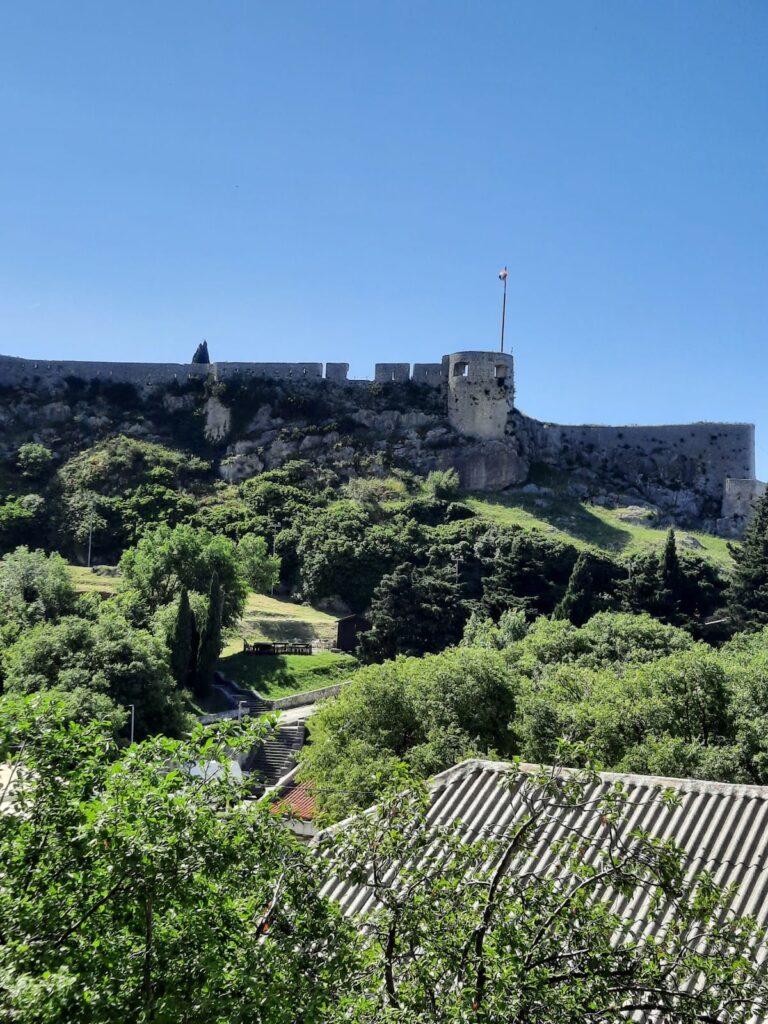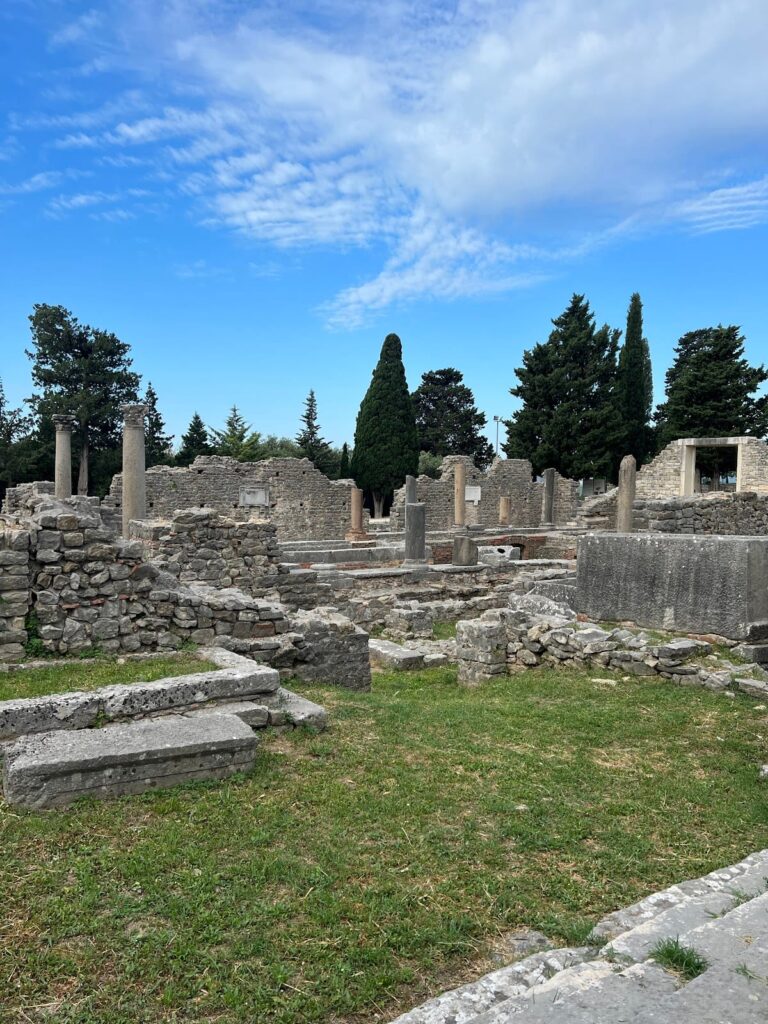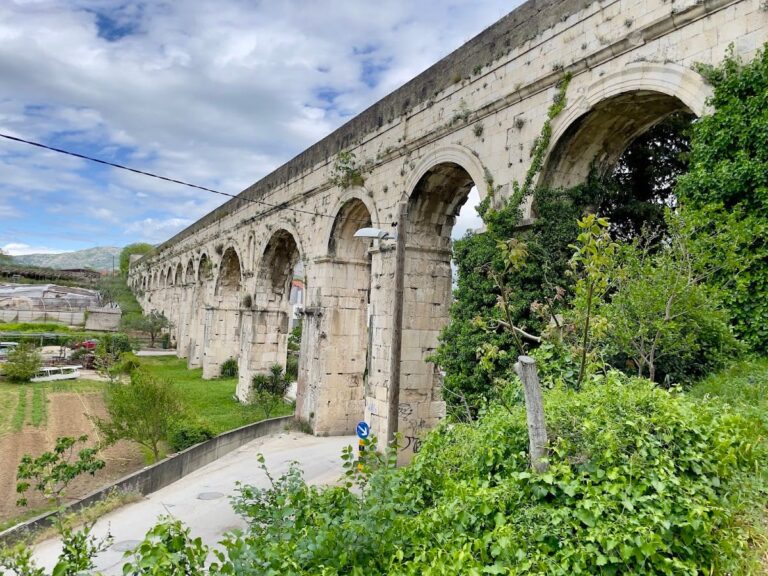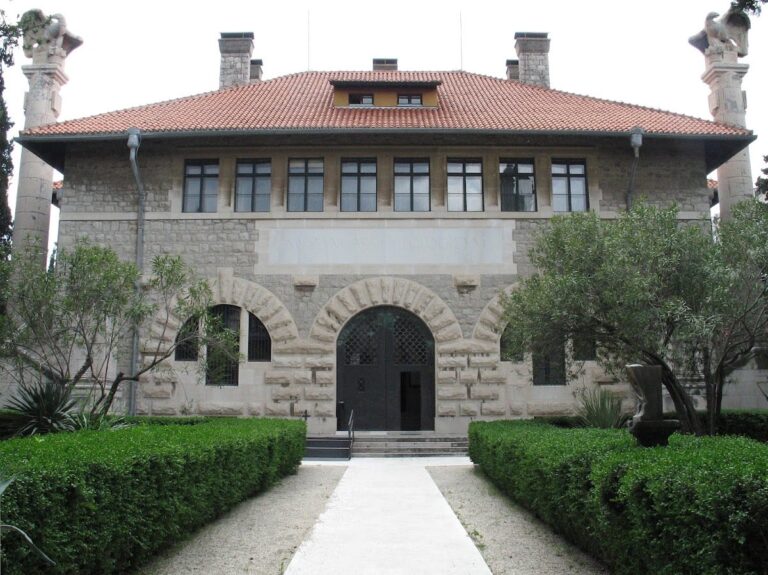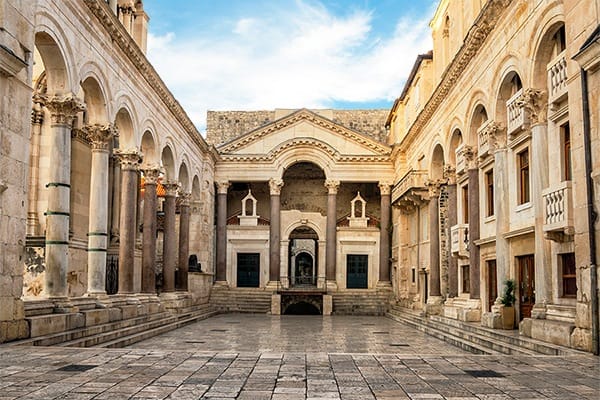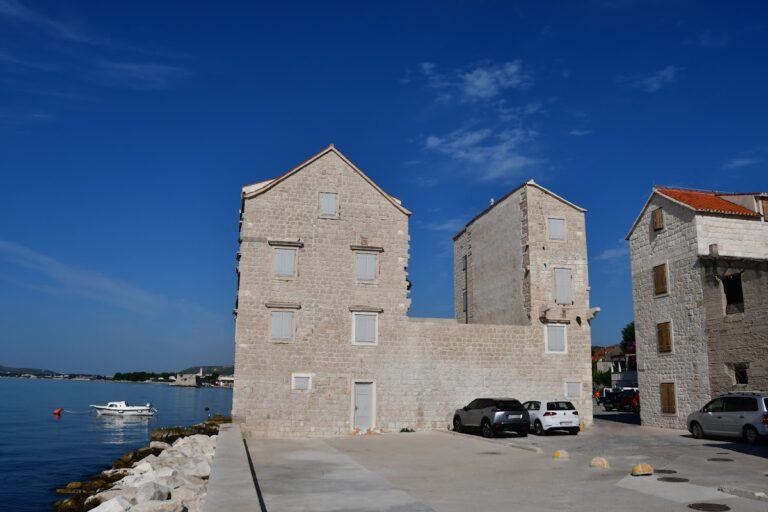Klis Fortress: A Historic Stronghold in Croatia
Visitor Information
Google Rating: 4.5
Popularity: High
Google Maps: View on Google Maps
Official Website: www.tvrdavaklis.com
Country: Croatia
Civilization: Medieval European
Remains: Military
History
Klis Fortress is located near the town of Klis in Croatia, perched on a strategic pass between the Mosor and Kozjak mountains. It began as a small stronghold built by the Illyrian tribe of the Dalmatae before 9 AD. The Romans annexed the area and referred to the site as “Andetrium” or “Anderium,” later calling it “Clausura.” The fortress is historically noted for a siege by Emperor Augustus during the Illyrian revolt, marking its early military significance.
Following the fall of the Roman Empire, control of Klis passed through several rulers. It was held by Odoacer, then Theodoric the Great of the Ostrogothic Kingdom, and from 537 became part of the Byzantine Empire. In the 10th century, Emperor Constantine VII mentioned Klis in his work De Administrando Imperio as a fortified location protecting coastal cities from Slavic raids.
From the 7th century onward, Klis became a central stronghold for the early Croatian state. Duke Mislav made it his seat in the 9th century, and his successor Duke Trpimir I expanded the fortress and established a church and the first Benedictine monastery in the valley below, known as Rižinice. Trpimir issued a Latin charter in 852 confirming Klis as his property and seat. Later, King Tomislav, Croatia’s first king, used Klis and nearby Biograd na Moru as his main residences in the early 10th century.
In the early 13th century, King Andrew II of Hungary granted control of Klis to the Knights Templar, appointing Pontius de Cruce as regent of Croatia and Dalmatia. The Templars soon lost Klis and were compensated with the coastal town of Šibenik. In 1242, the fortress successfully resisted a siege by Tatars under Kadan, part of the Mongol army pursuing King Béla IV of Hungary. This defense forced the Mongols to retreat. That same year, Saint Margaret of Hungary was born within the fortress.
From the late 13th century, the noble House of Šubić controlled Klis. Paul I Šubić of Bribir became Ban of Croatia and Dalmatia and Lord of Bosnia, ruling the fortress and surrounding lands until the late 14th century. Jelena Šubić, mother of the first Bosnian king Tvrtko I, was married at Klis, linking the fortress to regional dynastic history.
In the early 16th century, Croatian captain Petar Kružić led a prolonged defense of Klis against the Ottoman Empire. The siege lasted over 25 years, with Kružić and his Uskoks soldiers resisting largely without outside aid. The fortress fell to the Ottomans in 1537 after Kružić was captured and executed.
Under Ottoman rule, Klis served as the administrative center of a sanjak within the Bosnia Eyalet for about a century. In 1596, local nobles and Uskoks briefly recaptured the fortress but soon lost it again to the Ottomans. The Ottomans built a stone mosque inside the fortress on the site of an earlier Croatian Catholic chapel.
The Republic of Venice took control of Klis in 1669, converting the mosque into a Roman Catholic church dedicated to St. Vitus. Venice restored and expanded the fortress, maintaining control until 1797. After Venice’s fall, Austria took over, and the fortress gradually lost strategic importance as borders shifted eastward. The last military occupation occurred during World War II by Axis forces.
Today, Klis Fortress stands as a museum preserving its long history, displaying arms, armor, and traditional uniforms with support from Croatian cultural organizations.
Remains
Klis Fortress is a well-preserved example of Dalmatian defensive architecture, built irregularly to fit the rocky terrain. It consists of three elongated rectangular defensive lines formed by stone walls surrounding a central stronghold called “Položaj maggiore,” located at the highest eastern point. The fortress sits on a bare cliff divided into a lower western section near Mount Greben and a higher eastern section containing the “Oprah” tower and commander’s quarters.
The fortress’s only entrance is on the western side. Below it, on the southwest, lies a fortified settlement or “borgo,” surrounded by double walls with 100 to 200 towers. Another smaller settlement existed below Mount Greben on the Megdan plateau, containing lazarettos and quarantine facilities known as nazanama during Ottoman times. These were used to isolate travelers during epidemics, protecting coastal cities like Split.
Several potable water sources are near the fortress, including the “Holy Biblical Magi” spring, which was vital during sieges. The fortress’s current appearance mainly reflects Venetian renovations from the 17th century, with further modifications by Austrians in the 19th century.
The fortress has three main entrances, each linked to different historical periods. The first entrance, built by Austrians in the early 19th century on a former Venetian gate site, is flanked by Venetian fortifications from the early 18th century and the “Avanzato” position from 1648, featuring a narrow vaulted corridor called a casemate.
The second entrance leads to the medieval section once ruled by Croatian nobility. Near it stands the “Oprah” tower, first mentioned in 1355, with artillery barracks added by Austrians in the early 19th century. The upper floor of these barracks was destroyed in 1931.
The third entrance opens to the early medieval section, renovated multiple times by Venetians until 1763. This area contains an 18th-century side tower, a mid-17th-century weapons repository, an 18th-century powder magazine, and the “House of Dux,” the governor’s residence rebuilt in the 17th century on older Croatian royal foundations and later repaired by Austrians.
At the fortress’s highest point stands a “new gunpowder storage” built in the early 19th century. The oldest surviving domed building is a former Ottoman mosque constructed after 1537 on the foundations of an earlier Croatian Catholic chapel. The Venetians converted this mosque into the Roman Catholic Church of St. Vitus, removing the minaret. The church has a simple square plan with an octagonal stone roof and once contained three altars dedicated to St. Vitus, the Virgin Mary, and St. Barbara. It houses a 17th-century Baroque stone baptismal font dated 1658.
West of the church is the Bembo bastion, the largest artillery position in the fortress’s third defensive line. Built in the mid-17th century on the site of Kružić’s former tower and Speranza’s defenses, it features wide openings for cannons.
The fortress overlooks the ancient Roman settlement of Salona, the city of Split, Solin, Kaštela, Trogir, and central Dalmatian islands. Surrounding hills contain small Ottoman-built towers used for surveillance, complementing the fortress’s defensive network.
